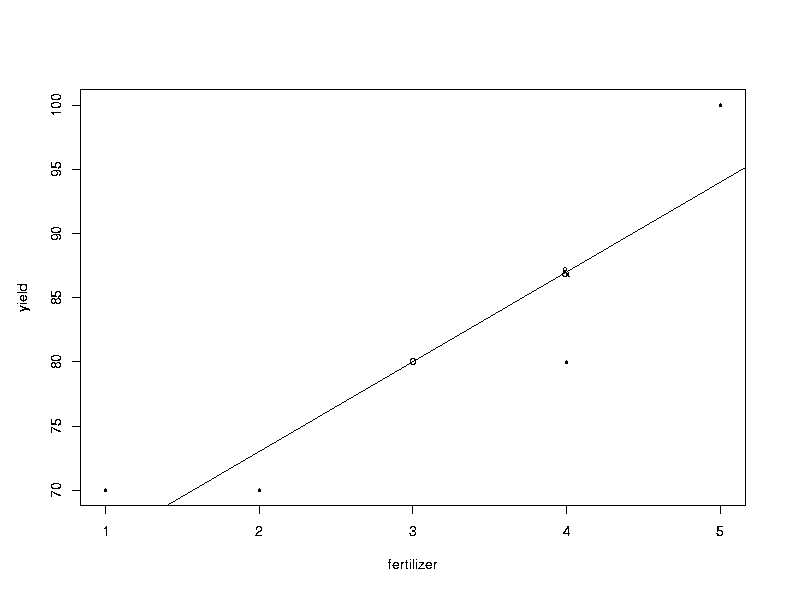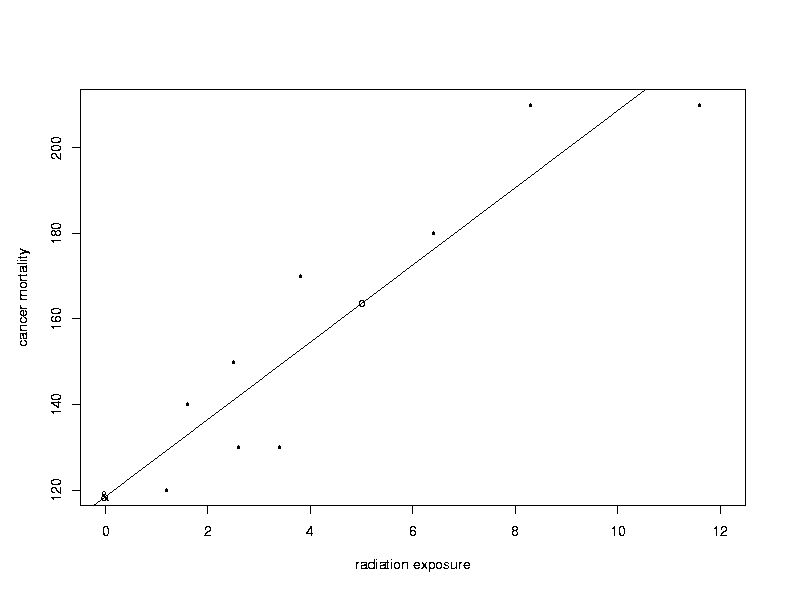| |||||||||||||||||||
|

- [^Y] = 59+7·3 = 80; this corresponds to the point marked with an ``o'' in the previous graph.
- [^Y] = 59+7·4 = 87; this corresponds to the point marked with an ``&'' in the previous graph.
- This corresponds to the estimated slope of the regression line, b = 7.
